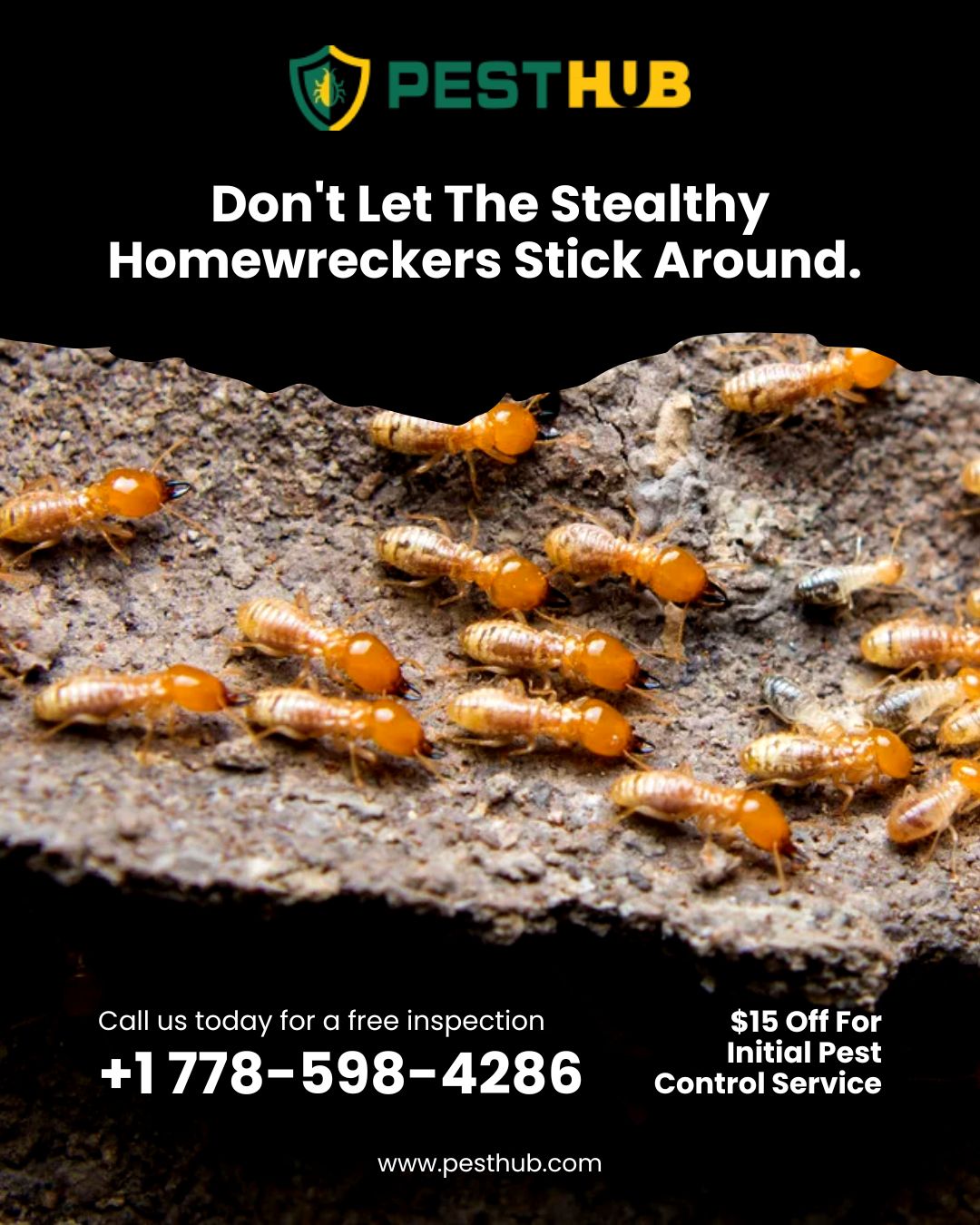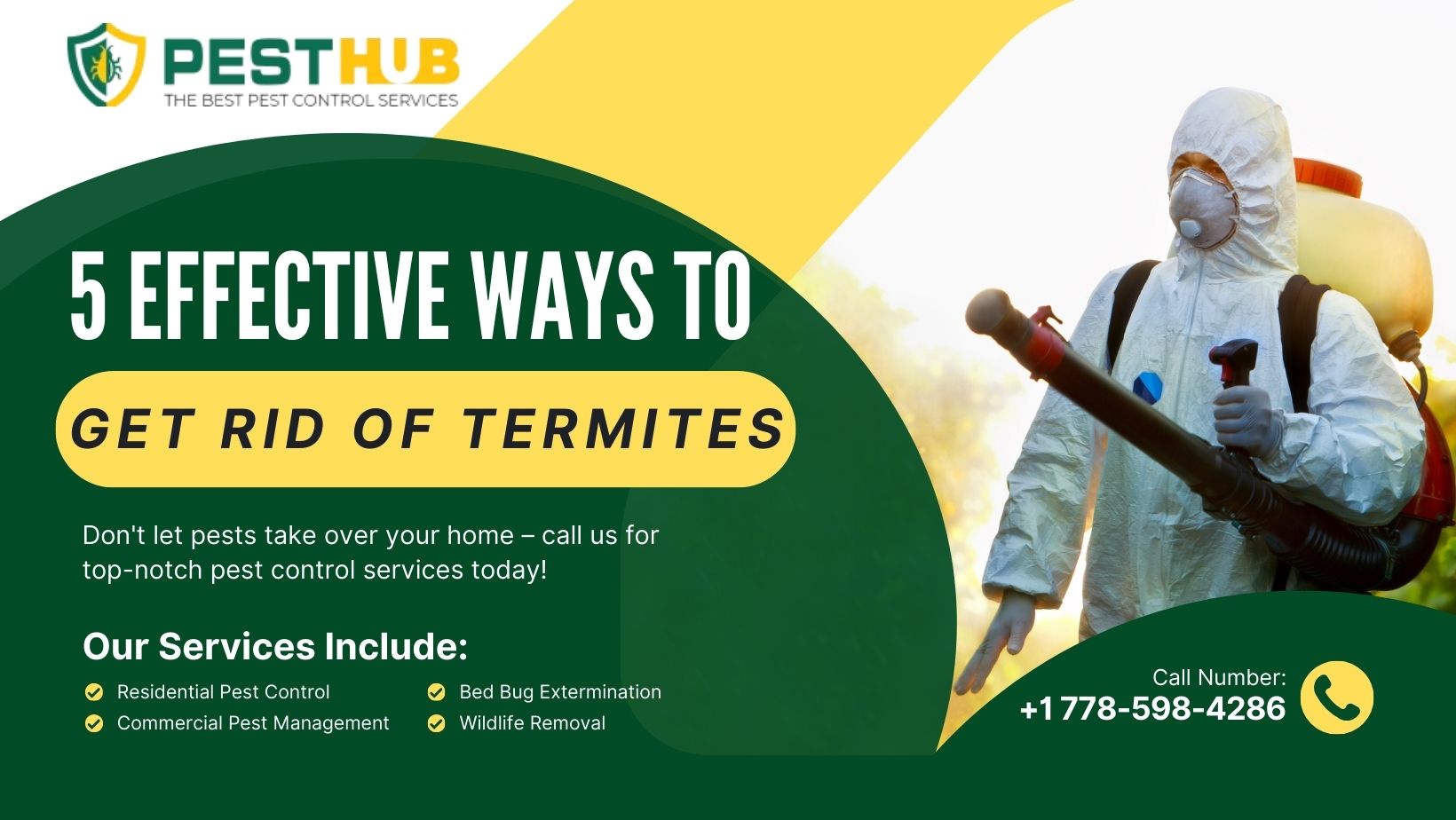To get rid of termites, use a combination of methods such as fixing moisture issues, applying natural deterrents like orange oil or vinegar, and opting for professional treatments like termite baits, nematodes, or liquid termiticides.
Termites are also known as “white ants.” They are tiny, wood-eating insects. Termites thrive in moist environments, and they can be a nuisance if left untreated. They cause significant damage to the structure of buildings and furniture. If you find termites infesting your house, you must get rid of them before they get out of control. This article provides all the necessary information about termites, the early signs of infestation, and how to get rid of them. It also explains the effective methods that can be used for termites treatment.
Understanding Termites
Termites are very small and they feed on cellulose. Cellulose is an organic compound that is commonly found in wood and plant materials. These pests are called “white ants” because they are often mistaken for ants. However, termites are actually more destructive than ants. They can destroy everything due to their feeding habits. A single colony of termites can feed on a large amount of wood. They damage the structure of wooden material, and this can cause expensive damage.
There are different types of termites, for example: subterranean termites, drywood termites, and damp wood termites. Subterranean termites are commonly found in houses as they live in underground colonies. Drywood termites feed on dry wood, while dampwood termites live in moist or decaying wood. If you know what kind of termites have infested your house, then you can easily find effective methods for eliminating them.

Signs of Termites in a House
If you suspect termite infestation in your house, then you must learn about the warning signs of a termite infestation. You must identify these signs early, otherwise a severe infestation can result in severe damage to the wooden material in your house. The most common signs you might notice are as follows:
Mud Tubes:
If you have a subterranean termite infestation in your house, then you must notice mud tubes. Subterranean termites move between their nests and food source in these mud tubes. These tubes are pencil-sized and are made of soil, saliva, and excrement. Mud tubes protect termites from dehydration and predators.
Hollow Wood:
If you suspect drywood termites, then tap on the surface of wooden materials. You must hear a hollow sound if termites are infesting the wooden materials in your house. These termites chew through the interior of wooden materials and leave a thin layer outside.
Swarmers:
If you find broken wings near windowsills or doors, then you might have a termite swarmers infestation in your house. Termite swarmers are insects with wings. They leave their colonies to find new places for building colonies. They appear in abundance during spring and summer.
Frass (Termite Droppings):
You might notice small, pellet-like droppings called frass, in the case of a Drywood termites infestation in your house. You will find these pellets near the infested wood; they can resemble sawdust. They can resemble sawdust.
Cracked or Bubbling Paint:
Termites can damage wood beneath the surface. If you have a termite infestation, you might see chipped paint on walls, ceilings, or wooden structures.
Squeaky Floors or Loose Tiles:
If termites are infesting your house, then your floors may become uneven, squeaky, or saggy, because termites consume wood. Termites eat the subfloor under tiles, so the tiles can be loose in the case of a severe infestation.
How to Get Rid of Termites: Extermination Options
If you have confirmed the presence of a termite infestation in your house, the next plan of action must be the extermination of termites. There are many options to choose from, including home remedies and professional services. You need to analyze the severity of the infestation and then decide which one will be effective in your case.
Chemical Treatments
The most commonly used method for extermination is chemical treatment. Chemical treatment involves using liquid termiticides. Liquid termiticides are applied to the soil around the home. This chemical creates a barrier that can kill termites immediately upon contact. There are some termiticides that act as a slow poison. Termites carry this poison back to their colony when they move back and forth, ultimately killing the whole colony as a result.
Fumigation
Fumigation is the ultimate solution for severe drywood termite infestation. In this process, the whole house is covered with a tent, a gas is released that penetrates deep inside the wood. This gas kills the termites after penetrating inside the wood. Fumigation is very effective, however the house must be vacated for a few days. It is necessary to ensure the safety of the people living inside the house.
Natural and DIY Solutions
You can use some effective home remedies if the infestation is not that severe. Some of the effective remedies are as follows:
- Boric Acid: Boric acid is a very effective and natural insecticide. It is applied to the areas affected by infestation to kill termites. It dehydrates the insects and disrupts their nervous systems.
- Nematodes: Nematodes are microscopic worms that eat termites. The nematodes are put on the soil around the house. They attack termites and wipe out their colonies.
- Orange Oil: Orange oil can be used to kill termites as it contains d-limonene. D-limonene kills termites after contact. It is the best option for people who need an environmentally friendly solution for drywood termites.
These methods can be effective for minor infestations; however, they will not work for severe termite infestations.
Hiring Professional Exterminators
If you are dealing with a severe infestation, you will not be able to handle it yourself at home. We recommend that you hire professional help for long-term relief. Pest control professionals are experienced and knowledgeable. They know the best and most effective methods for termite extermination. They have effective chemicals and professional equipment to help you get rid of termites completely. They assess the termite situation in the house and then apply the most effective method for extermination.

If you are looking for exterminators, make sure you hire someone who specializes in termite infestation. Do a background check by reading reviews online. Check the certifications and look for licenses by the National Pest Management Association (NPMA). This will ensure the quality of work is up to the mark. The professional pest control service provider will share the plan of action with you. Moreover, they offer follow-up check-ups to make sure that the infestation has been eradicated completely.
Final Thought
Termites destroy the structure of wooden materials. They are silent destroyers and can cause immense damage if you do not treat the issue right away. Early recognition of termite infestation can save you from long-term damage. You can use home remedies for extermination or hire professionals to get rid of the termites. Inspect your house regularly to avoid future damage. Preventive measures can ensure the safety and protection of your house.


